Participants of Police Workshop visit the aixCAVE
|
From July 11 – 15, 2016 the 13th International Police Workshop Photogrammetry / Laser Scanning was held at LAFP NRW (Landesamt für Ausbildung, Fortbildung und Personal-angelegenheiten NRW), at the education center in Neuss. 100 specialists for crime scene and traffic accident documentation and damage visualization, police officers, forensic specialists, scientists, surveyors and coroners from 12 nations came together for a 5-day workshop, among them Fabian Lennartz and Andrea Bönsch from the Virtual Reality Group. The workshop discussed the possibilities and limitations of three-dimensional crime/accident scene recording and visualization.
The participants were informed via presentations, workshops and lectures about interesting cases, innovations in hard- and software as well as quality management, encouraging a professional exchange. |
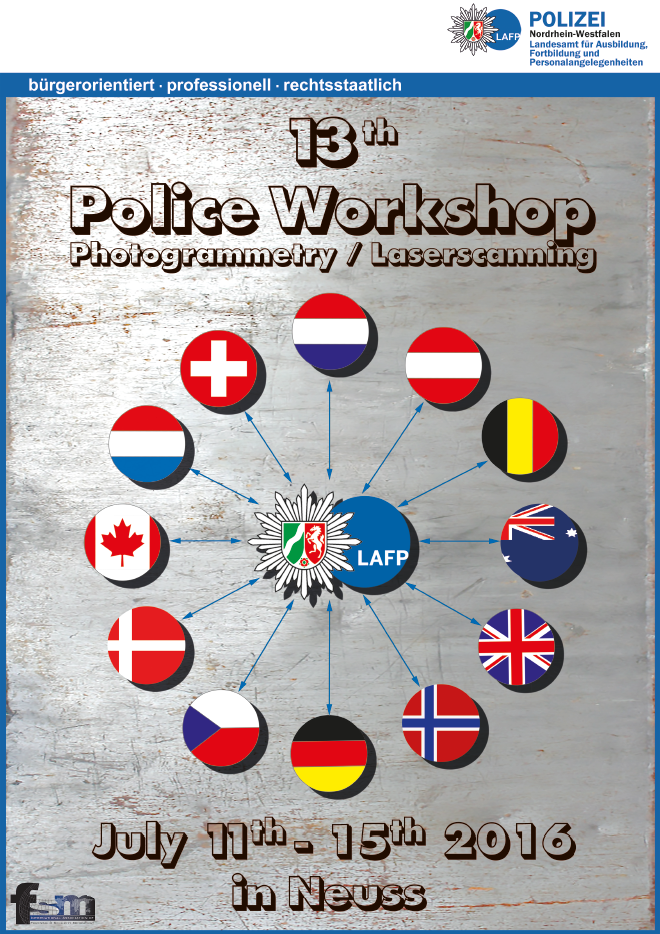
|
Besides the theory, a practical exercise was part of the workshop program: on the second day, a major disaster in form of an “explosion of a tanker vessel in Neuss Harbor” was simulated. The task was to measure and document the extent of the damage. Different teams used the latest technology from ashore, on and below the ship’s deck, from the air and from underwater. An article in the NGZ Online reported on the exercise.
After the exercise, the individual documentations were combined, obtaining a detailed, three-dimensional reconstruction of the simulated accident scene for screen visualization. Thanks to a close cooperation between the Detective Chief Commissioners Mr. Voßenkaul and Mr. Weiske, who lead the seminar, and the Virtual Reality Group, the recorded data could be visualized in a way, not yet used in the crime/accident scene visualization: via Virtual Reality.
To this end, an excursion to the RWTH Aachen took place on the fourth day of the workshop. After being welcomed by the director of the IT Center, Prof. Matthias S. Müller, and an introductory talk on Virtual Reality by Andrea Bönsch, the participants visited the aixCAVE in which the tanker was visualized. By this, they were able to weigh up the advantageous and disadvantageous of enlarging the methodological toolbox of crime/accident scene visualization by means of Virtual Reality. A second application using the Oculus Rift, and additional lectures rounded off the excursion.
Here are some small impressions of the workshop (pictures by Verena Kunkel and Andrea Bönsch):
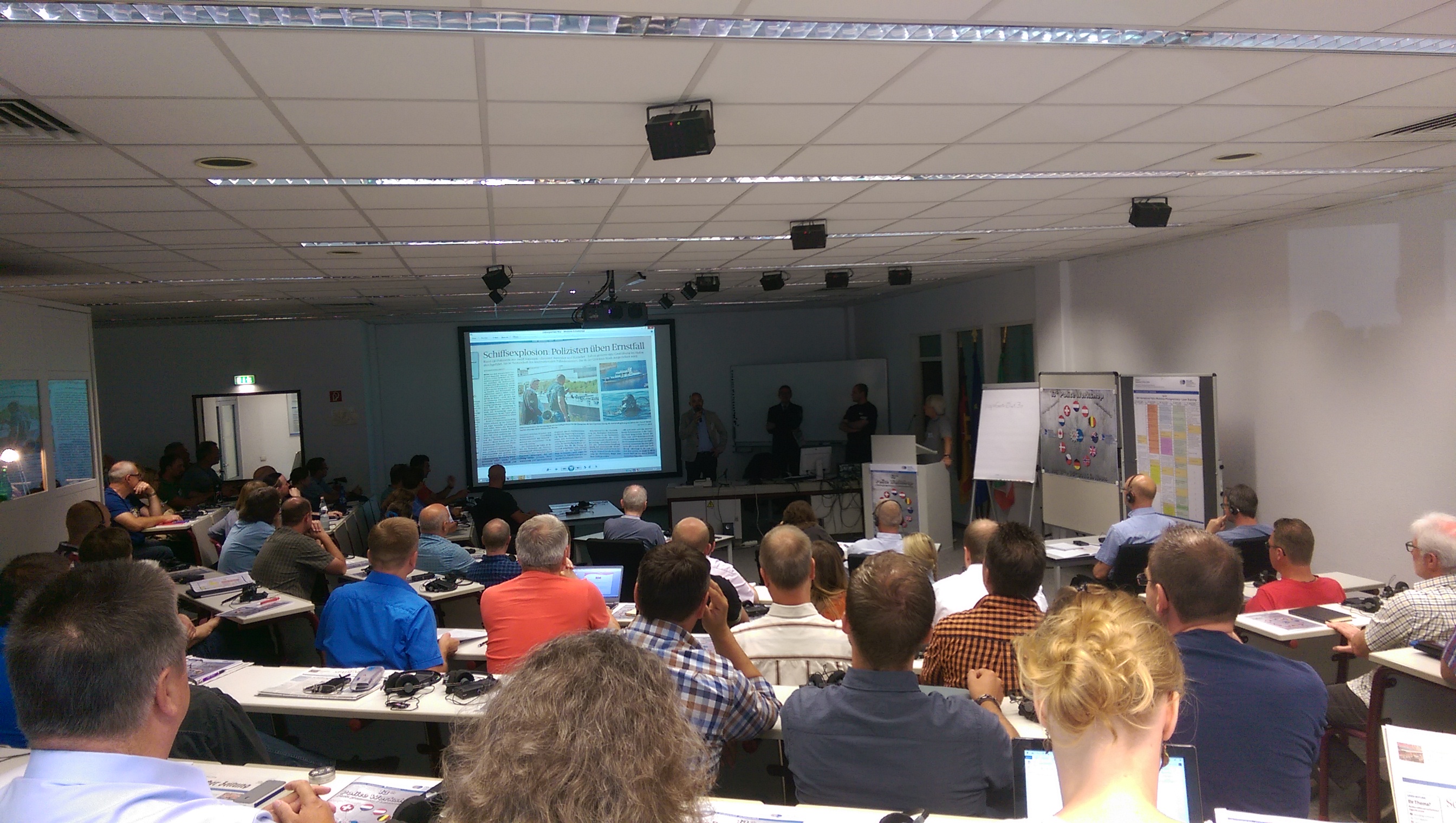 (Participants in the lecture hall at the education center in Neuss.) |
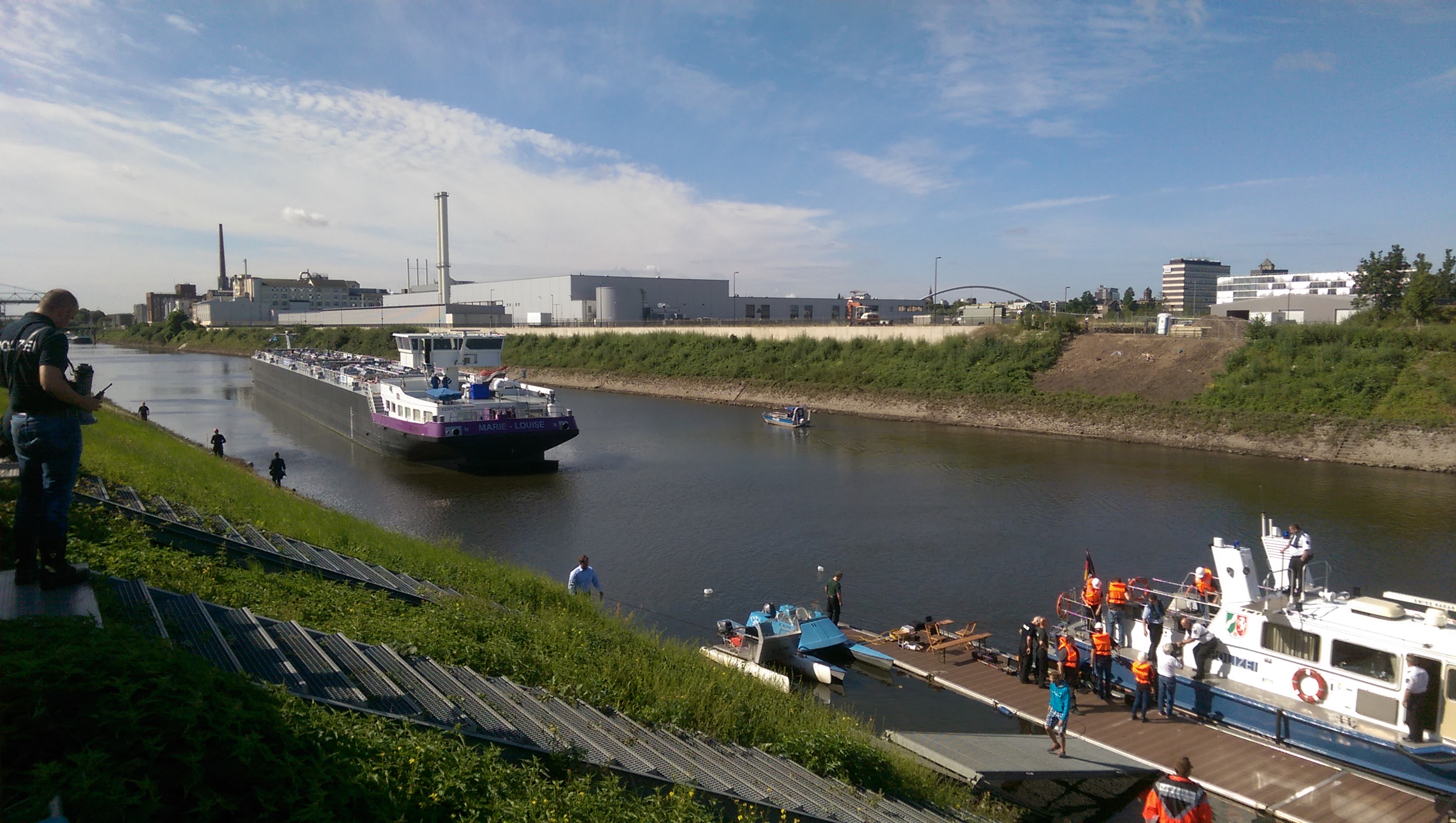 (Practical exercise in Neuss Harbor: simulating an explosion of a tanker vessel.) |
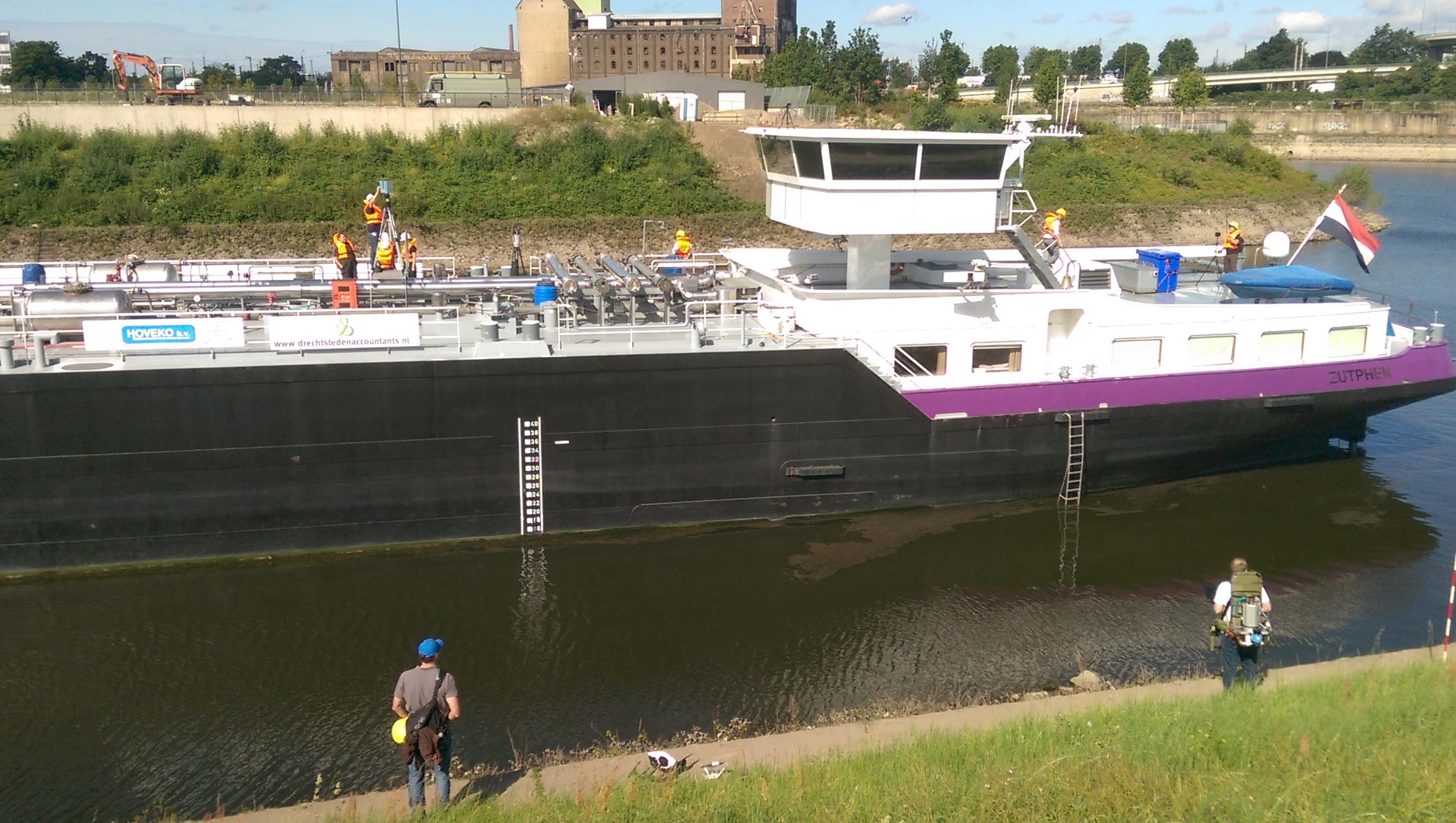 (Practical exercise: measuring and documenting the extent of the damage from ashore, on the ship’s deck and from the air.) |
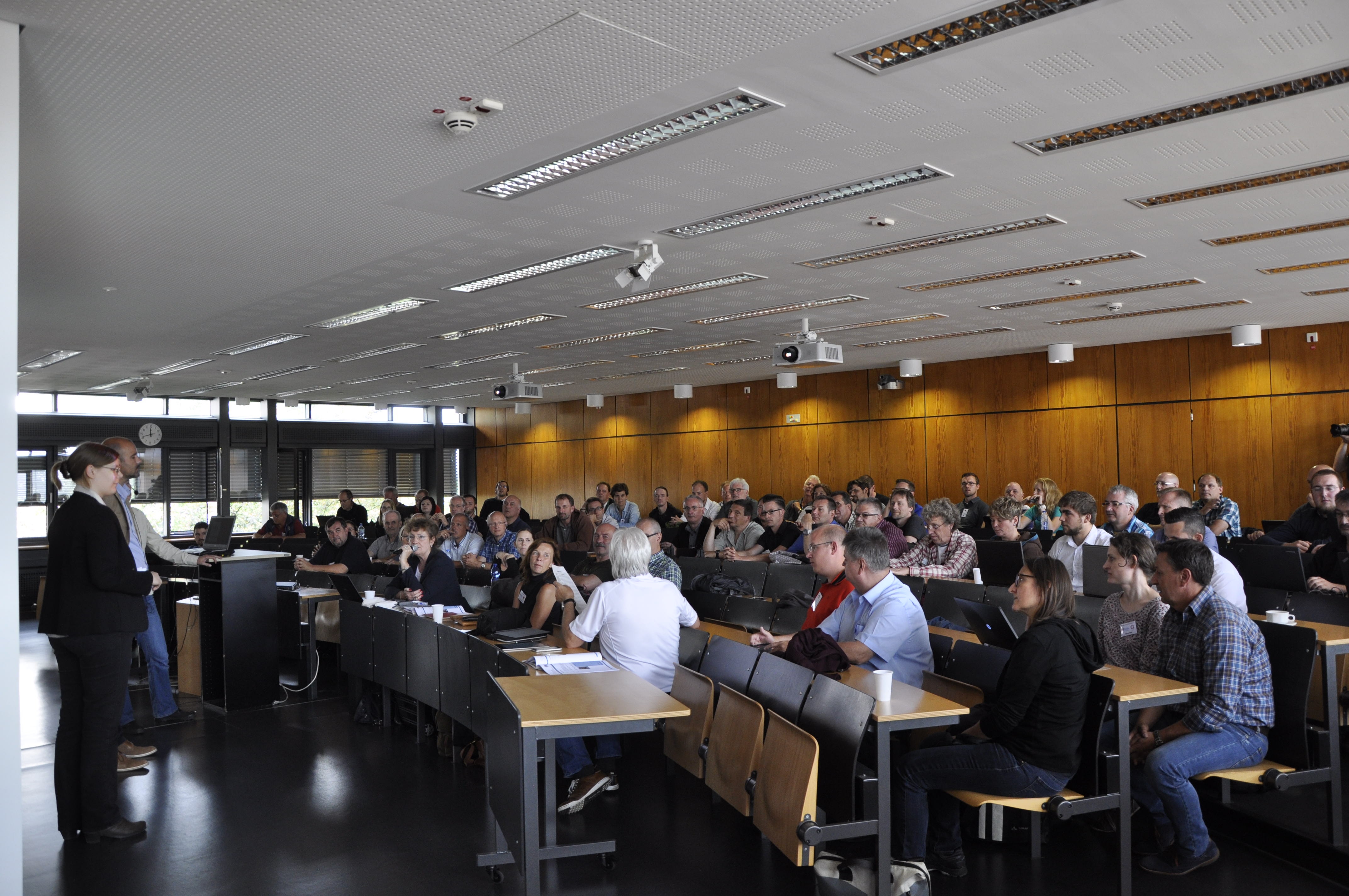 (Participants in the lecture hall at the IT Center.) |
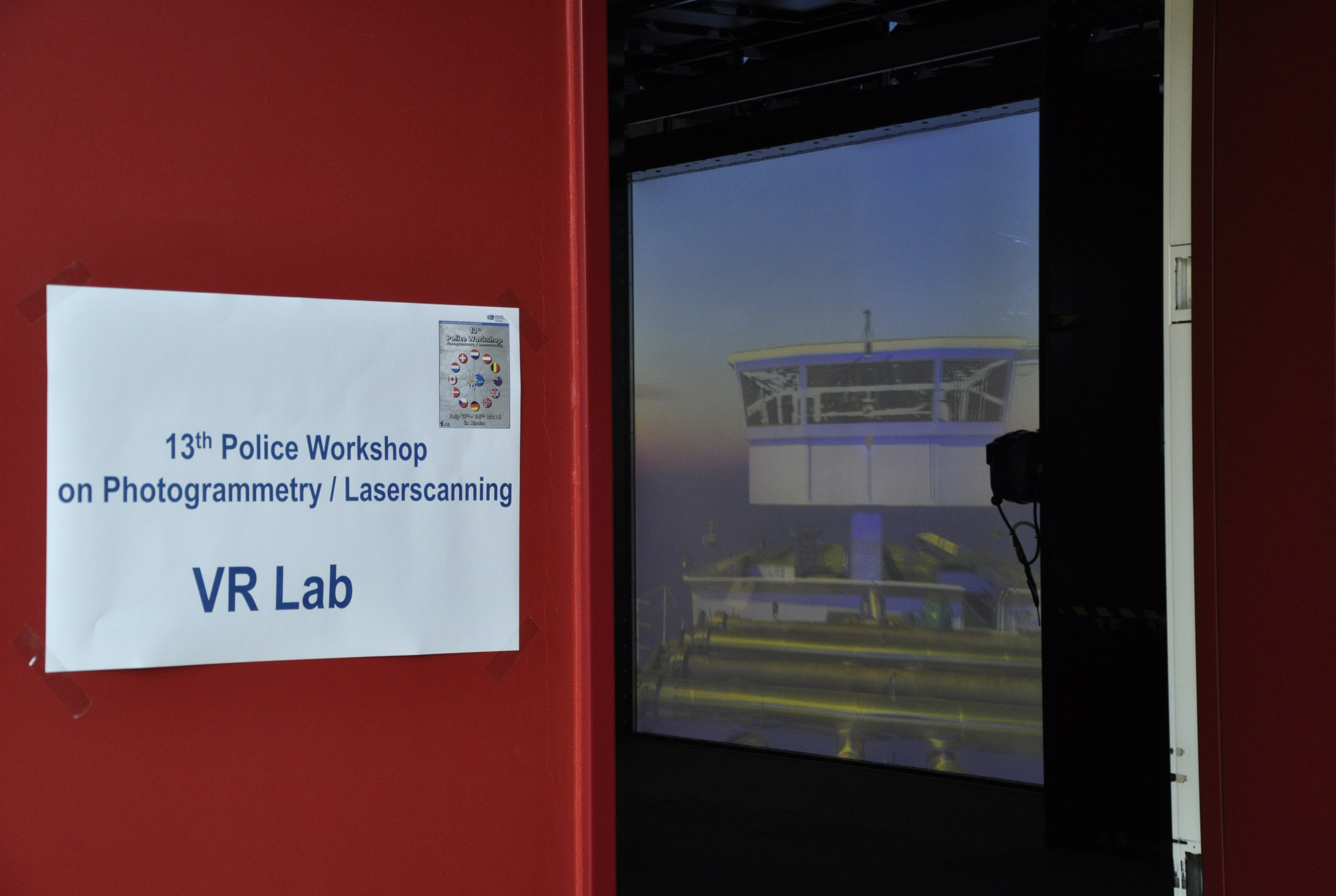 (Innovative crime/accident scene visualization by means of Virtual Reality.) |
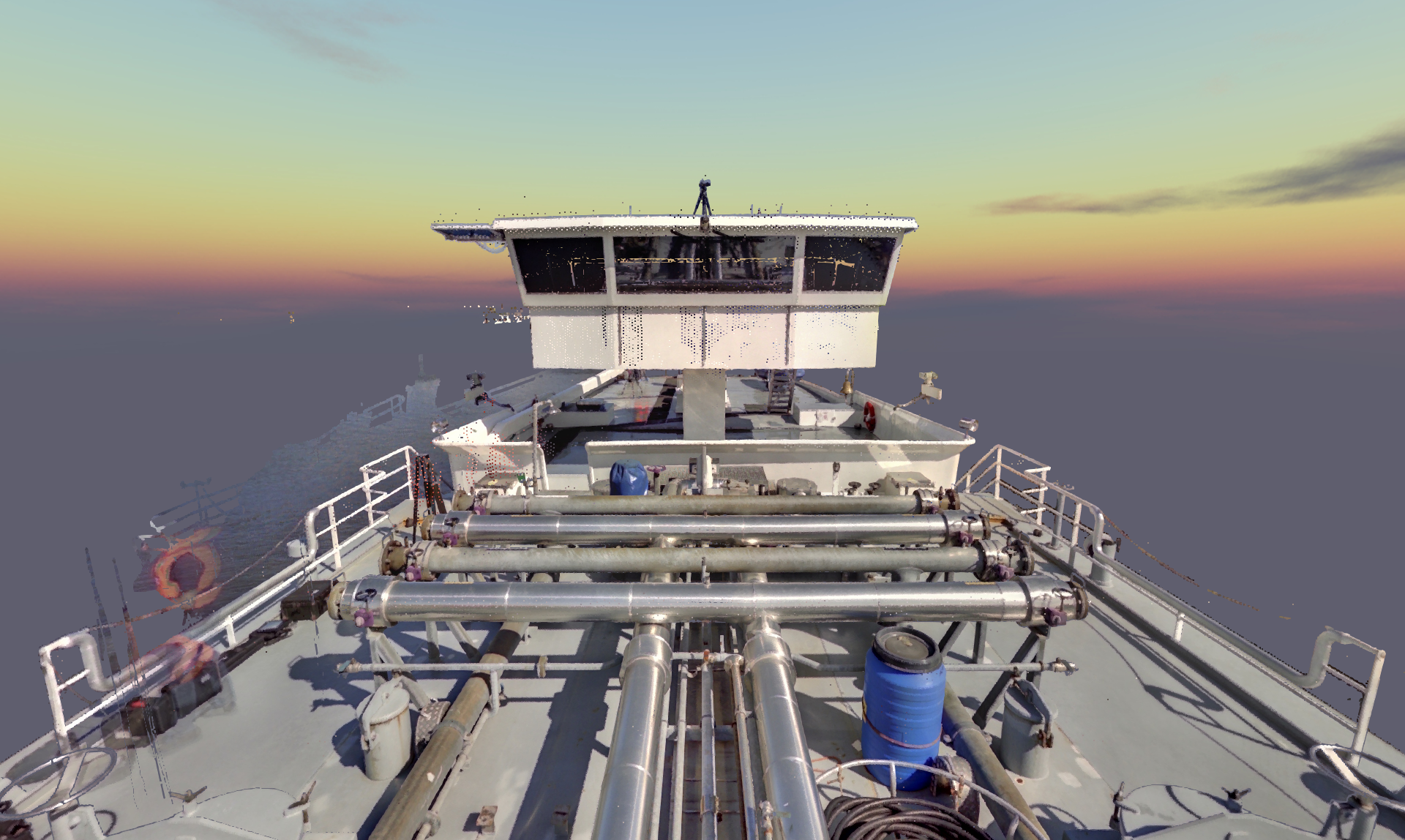 (Screenshot of the tanker vessel reconstruction.) |
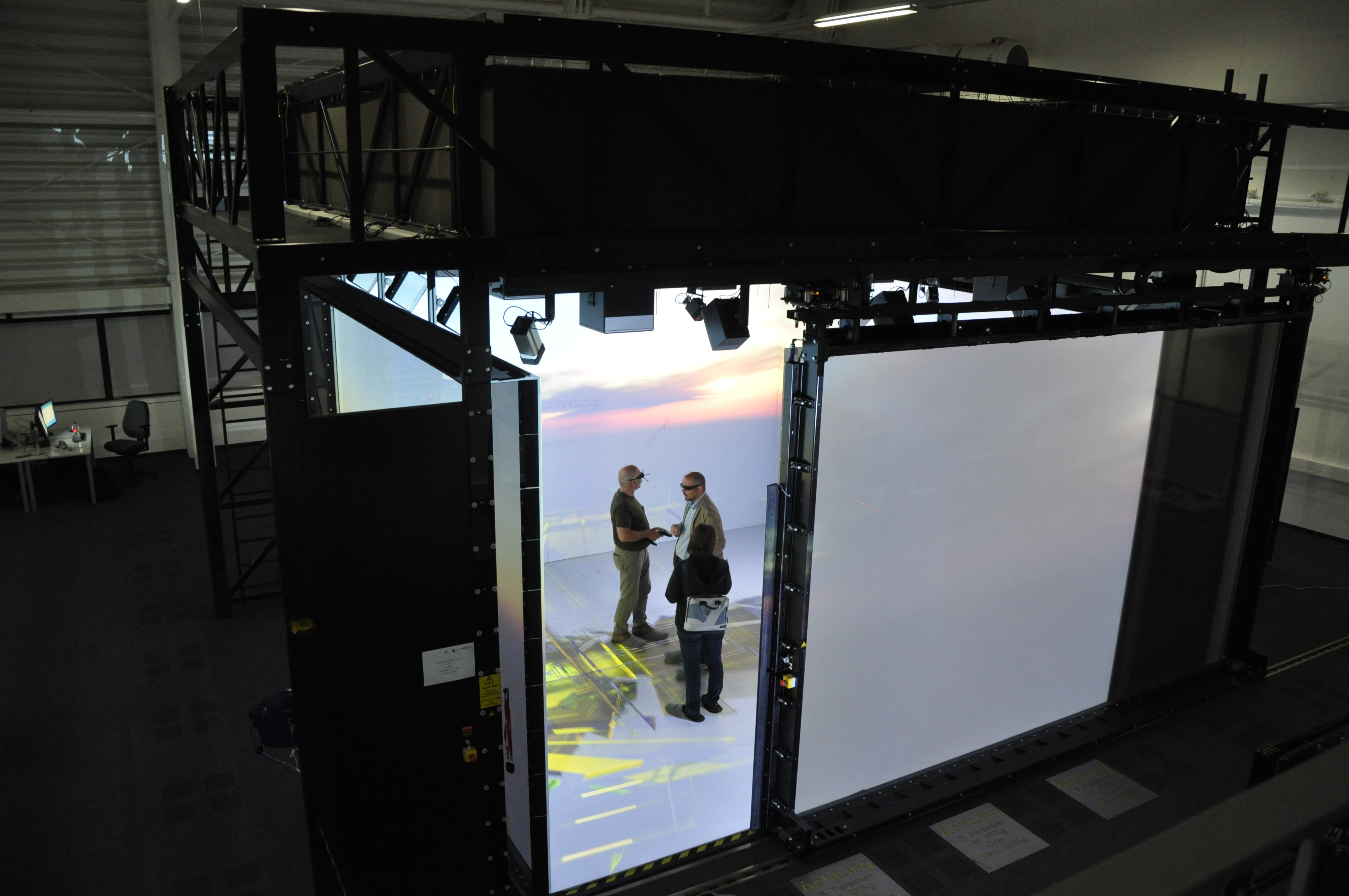 (Participants experiencing the virtual tanker vessel inside the aixCAVE.) |
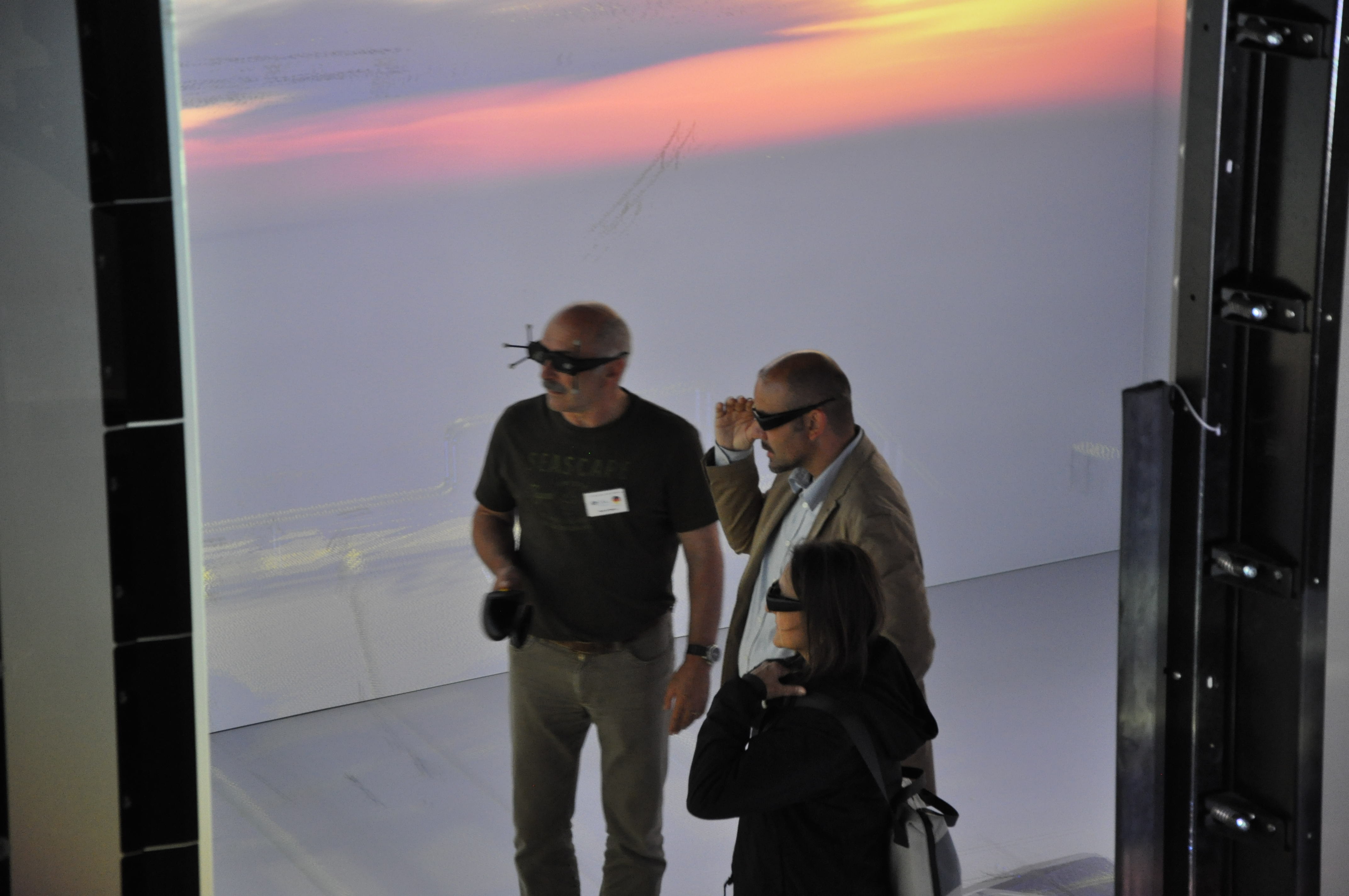 (Participants inside the aixCAVE.) |

